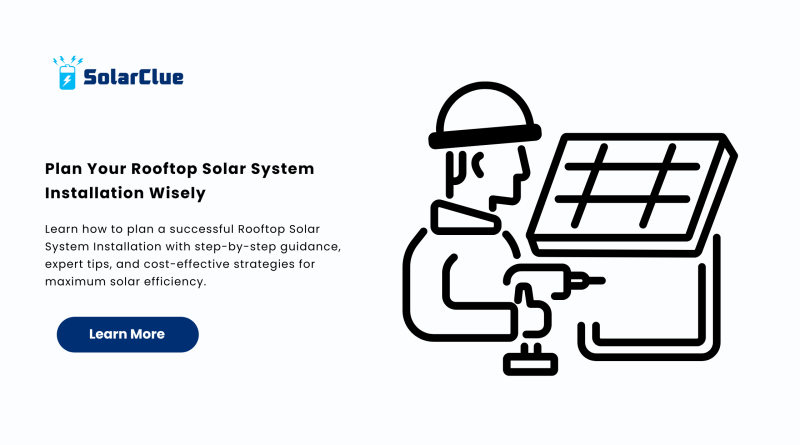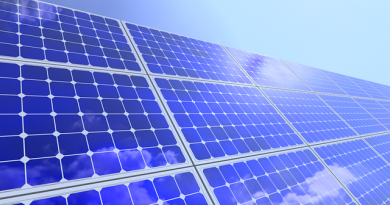Plan Your Rooftop Solar System Installation Wisely
With growing concerns about climate change and soaring electricity bills, more homeowners and businesses are turning to Rooftop Solar System Installation as a sustainable and economical solution. If you’re considering switching to solar, proper planning can make all the difference. This guide will walk you through every step you need to take before installing a rooftop solar system, ensuring you make the most of your solar power system investment.
Table of Contents
- 1 Why Choose a Rooftop Solar System?
- 2 Site Assessment and Feasibility Study
- 3 Understanding Your Energy Needs
- 4 Selecting the Right Solar Panels
- 5 Choosing the Right Inverter
- 6 Budgeting and Cost Estimation
- 7 Finding a Trusted Installer
- 8 Legal and Regulatory Compliance
- 9 Installation Process Explained
- 10 Post-Installation Monitoring and Maintenance
- 11 Common Mistakes to Avoid
- 12 Benefits Beyond Cost Savings
- 13 Final Thoughts
- 14 FAQs
Why Choose a Rooftop Solar System?
Environmental Impact
Choosing rooftop solar helps reduce your carbon footprint. It’s one of the most impactful ways to contribute to a cleaner environment.
Long-Term Cost Savings
Though the initial investment may seem high, a rooftop solar system can drastically reduce your electricity bills in the long run.
Government Incentives
Many regions offer subsidies, tax benefits, or net-metering systems, making rooftop solar system installation even more attractive financially.
Site Assessment and Feasibility Study
Before jumping into installation, a detailed site assessment is essential.
Roof Orientation and Angle
Your roof should ideally face south and be tilted at the optimal angle to get the most sunlight.
Shading Issues
Check for trees, buildings, or other obstructions that may cast shadows and reduce the efficiency of your solar power system.
Roof Condition
A strong, damage-free roof is crucial for holding solar panels securely over the long term.
Understanding Your Energy Needs
Knowing your energy consumption patterns helps determine the size of the system you’ll need.
Analyzing Past Bills
Look at your electricity bills for the past year to calculate average monthly usage.
Determining System Size
Once you have your usage data, consult with a professional to estimate the capacity required for your rooftop solar system.
Selecting the Right Solar Panels
There are different types of solar panels, and your choice will impact both performance and cost.
Monocrystalline vs. Polycrystalline
Monocrystalline panels are more efficient and compact, while polycrystalline panels are more budget-friendly.
Warranty and Lifespan
Look for panels with a good warranty period (usually 20–25 years) and proven durability.
Choosing the Right Inverter
Inverters convert DC electricity generated by panels into usable AC electricity.
Types of Inverters
String inverters, microinverters, and power optimizers are common choices. Each comes with its own pros and cons.
Compatibility and Efficiency
Ensure the inverter matches your panel specifications and offers high conversion efficiency.
Budgeting and Cost Estimation
Understanding the cost breakdown helps in better financial planning.
Installation Costs
Includes equipment, labor, permits, and possible roof repairs.
Maintenance Expenses
While solar systems are low-maintenance, occasional cleaning and servicing may be required.
Return on Investment (ROI)
Calculate the payback period and long-term savings to determine financial viability.
Finding a Trusted Installer
Choose a certified and experienced solar installer to avoid future issues.
Checking Credentials
Verify licenses, certifications, and past work references.
Reading Reviews
Online reviews and customer testimonials can offer valuable insights.
Legal and Regulatory Compliance
Stay informed about local regulations and utility requirements.
Permits and Approvals
Get all necessary permissions from local authorities before beginning installation.
Net Metering Policies
Understand how surplus energy will be fed back into the grid and compensated.
Installation Process Explained
A professional installation typically follows a structured procedure.
Mounting the Panels
Installers will securely mount the panels on your roof structure.
Electrical Setup
Wiring is done to connect the panels to the inverter and the home’s electrical system.
Testing and Commissioning
The system is tested for performance, and final adjustments are made.
Post-Installation Monitoring and Maintenance
Once your system is live, consistent monitoring ensures optimal performance.
Remote Monitoring Tools
Most modern solar power systems come with apps or portals for live performance tracking.
Periodic Cleaning
Dust and debris can reduce efficiency, so regular cleaning is recommended.
Common Mistakes to Avoid
Avoiding these pitfalls can save time and money.
Skipping Professional Advice
Always consult professionals rather than making assumptions based on online research alone.
Underestimating Load Requirements
Incorrect sizing can lead to poor system performance or energy shortfalls.
Benefits Beyond Cost Savings
Besides reducing bills, solar energy has other compelling advantages.
Property Value Increase
Homes with rooftop solar systems often have higher resale values.
Energy Independence
Reduce reliance on the grid and gain more control over your energy usage.
Final Thoughts
Proper planning and execution of your Rooftop Solar System Installation not only ensures high efficiency and returns but also contributes to a greener planet. With advancements in technology and government support, now is the perfect time to invest in solar energy.
Ready to make the switch? Get detailed insights, guides, and offers at solarclue.com and explore informative resources at blog.solarclue.com — let your rooftop be the source of a brighter tomorrow!
FAQs
1. How much does a rooftop solar system installation cost?
The cost varies based on the size of the system, type of panels, and region. On average, it ranges from ₹60,000 to ₹1,20,000 per kW in India.
2. Can I install a rooftop solar system on any type of roof?
Most types are suitable, but a professional should assess your roof’s strength, material, and orientation for optimal performance.
3. Is government subsidy available for solar installations?
Yes, residential users can avail of subsidies under MNRE schemes. Check with your state’s DISCOM for region-specific policies.
4. How long do solar panels last?
Solar panels typically last 25–30 years with minimal performance degradation.
5. Can my rooftop solar system work during a power outage?
Only if it’s connected to a battery storage system or a hybrid inverter. Standard grid-tied systems shut down during outages for safety.


